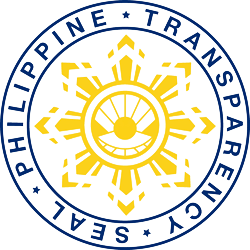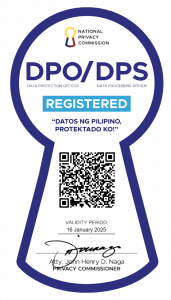Good morning!
Today, it is my pleasure to enumerate to you the many reasons why our country the Philippines is more than ready to become the next hyperscaler hub in Asia, and what makes it an ideal location for hyperscalers.
First of all, our country’s economic situation has been improving considerably and we are seeing very encouraging results in terms of health and the economy. Our GDP is up by 11.8% in the second quarter of this year. Our exports year-to-date (YTD) data from January to July is up by 19.5% or equivalent to USD42.39-B, significantly higher compared to USD35.4-B in 2020 and even higher than the pre-pandemic figure of USD40.82-B in 2019. Meanwhile, the latest foreign direct investments (or FDI) YTD from January to June is also up by 40.7%, equivalent to USD4.3-B, again notably much higher than the USD3.05-B in 2020 and pre-pandemic figures of USD3.6-B in 2019, indicating real growth. These are all welcome news as they show the economic resilience of the Philippines amidst the current challenges.
The pandemic has forced us to maximize the use of digital platforms, which accelerated the growth of our data center market. The Philippines now ranks the second overall amongst Southeast Asian countries, with Manila having a compound annual growth rate (CAGR) of 14.2%, next to Hanoi Viet Nam’s 14.5%. This poses huge potential for the country and, according to Frost and Sullivan, the projected supply growth of data centers in 3-5 years for the Philippines is at 24%.
Secondly, we have incentive programs lined up for key industries such as hyperscalers. With the passage of the Corporate Recovery and Tax Incentives for Enterprises (CREATE) Law, the Philippines now has one of the most generous tax incentive regimes in the world. This law also removes all nationality and export biases. The previous requirement that foreign-owned business enterprises must either be pioneer or exporting 70% of its total production is no longer required.
We also have several initiatives to support the growth of the digital market, e-commerce, and industrialization, such as the e-Commerce Philippines 2022 Roadmap. In terms of the regulatory environment, our country boasts relevant laws that ensure data and intellectual property protection and well-defined data ownership, such as the Cybercrime Prevention Act of 2012.
We have already succeeded in the digitalization and streamlining of government services as part of the law on Ease of Doing Business. This law pushed for the simplification of requirements and automation of government procedures and processes, accelerating the use of digital technology for government services to improve transactions in public offices.
Our country’s digital landscape makes it an ideal setting to support the growth hyperscalers as well as data center operations. The Philippines is currently the social media capital of the world with 89 million active social media users. As of January this year, according to the Global Social Media Use Ranking, the Philippines ranked 6th in Facebook, 10th in YouTube, 11th in Twitter and 18th in Instagram. Manila, the capital of the Philippines, also joins other Asian cities on the list of 30 top startup ecosystems in the Global Startup Ecosystem Report (GSER) released in 2021 . In the same report, Manila exhibited to have the 10th most affordable talent in the region and 20th globally.
The country offers a rich talent pool of young professionals being the second highest population in Southeast Asia, with a very young and tech-savvy population with a median age of 25.7 years old. We have a ready workforce of 49 million, with an annual graduation rate of almost 800,000 yearly. The highest percentages of the graduates come from the engineering, IT and science fields.
In terms of infrastructure, the PH is one of the early adapters of 5G network in the Asia Pacific Region, with ongoing investments by telco companies. The PH also offers solid international connectivity, both outwards and within the country with 16 international cable systems—sub-sea cable builds, 13 cable landing stations, and local roll-out of 840,000 kilometers of fiber optic network. We host the presence of nine major commercial data center providers within 10 cities across the country.
We have high mobile phone connections at 152 million and 138% mobile penetration. This relates to the propensity to consume data and access services and content which will be delivered by hyperscalers. We have 73.9 million internet users, the 2nd highest in Southeast Asia, with an average of 10.5 hours of internet usage per day.
The Philippines has a very promising business market that uses cloud-based technology. The Filipino’s widespread use of mobile streaming, social media networking, and the like is driving the demand for cloud services. The Philippines is also one of the fastest IT business process outsourcing (IT-BPO) markets in the region with BPO companies using cloud-based services to support their operations. Our country’s cloud computing market is expected to grow to USD3-B by 2025.
As to energy requirements, we have identified companies that are sustainability-conscious and are primarily potential sources of co-investments in renewable energy projects.
We continuously seek to make the Philippines more conducive for companies to conduct and continue business operations, and we are staying the course in terms of empowering individuals and business firms to thrive in the new normal. This is done by taking steps to further accelerate the nationwide vaccination program and manage risks for the safe and gradual reopening of the economy.
With the continuous improvement on the country’s economy, as envisioned by President Rodrigo Roa Duterte, coupled by our relevant legislations, promising economic profile, and strong government support for hyperscalers, we highly encourage you all to come and Make it Happen in the Philippines!
Thank you. ♦
Date of Release: 7 October 2021



